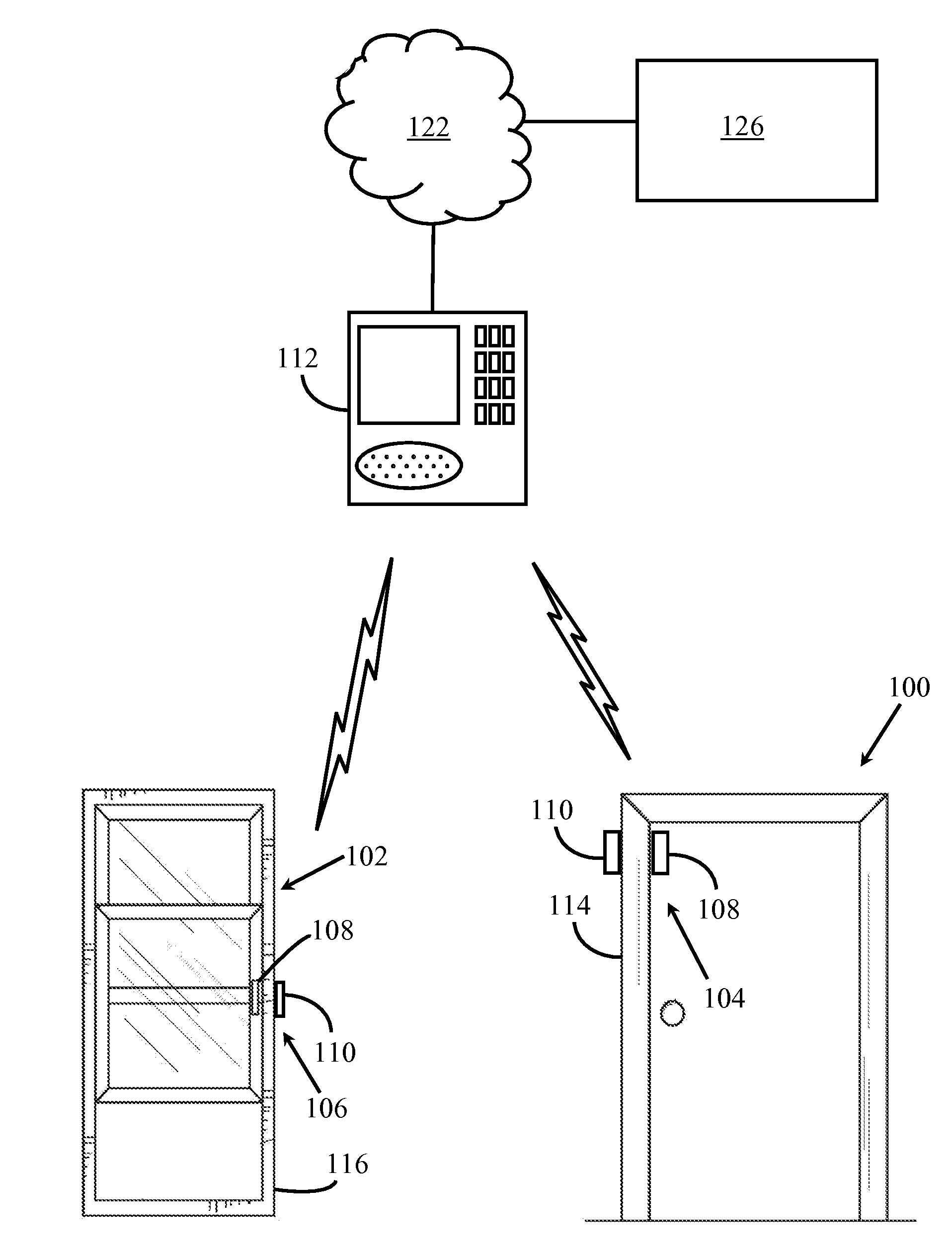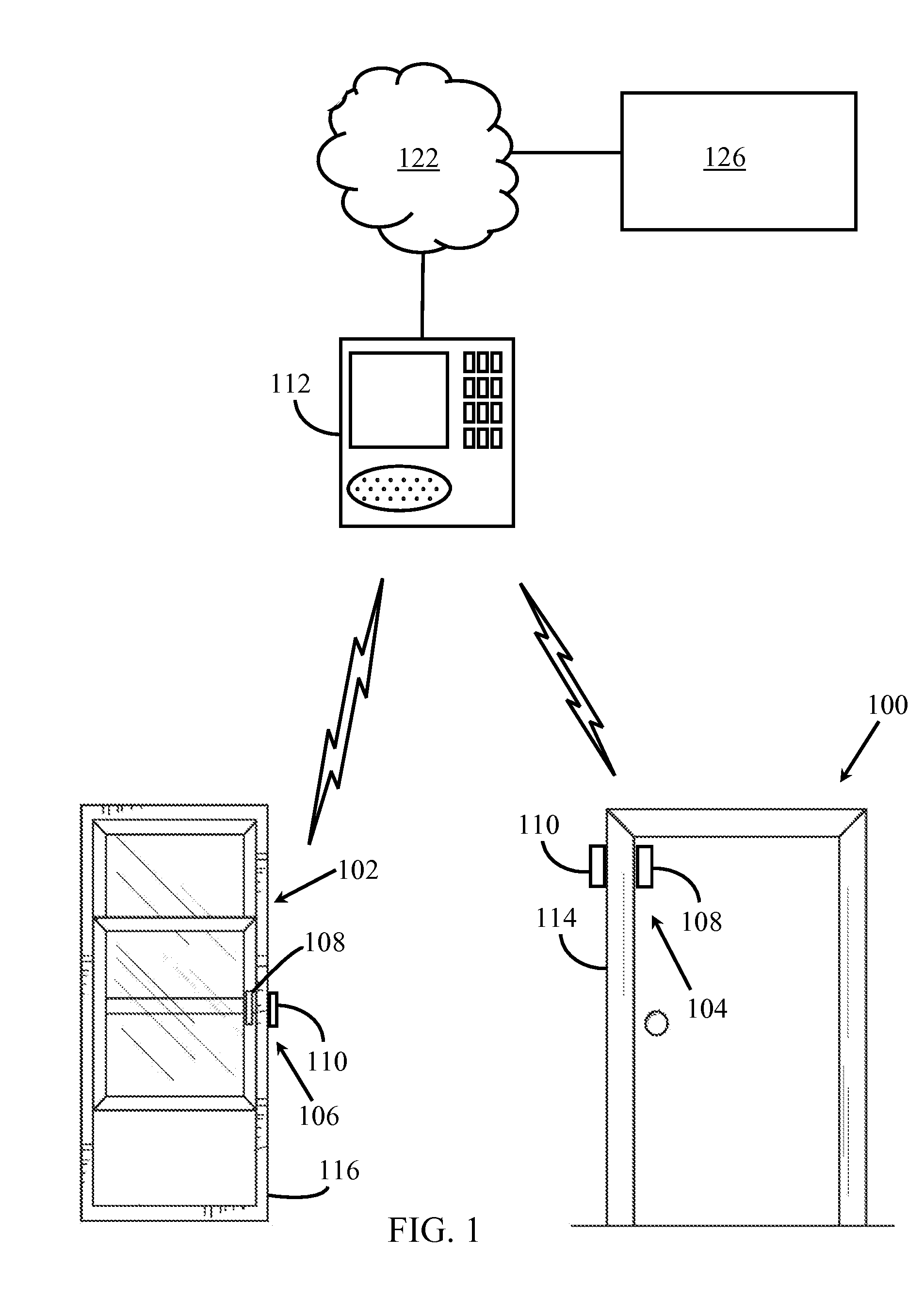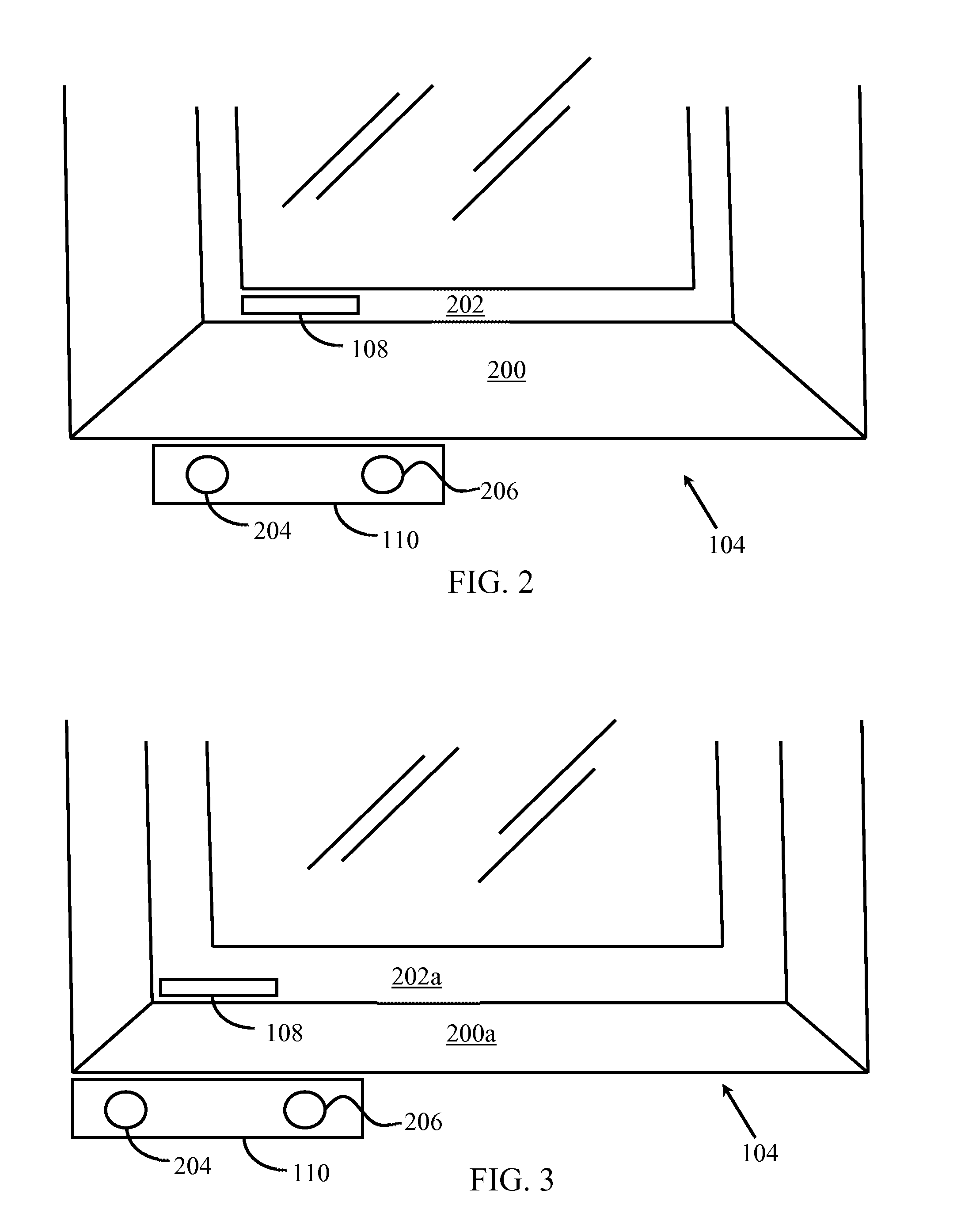Programable security sensor
a security sensor and programable technology, applied in the field of home security, can solve the problems of unable to operate in a “, unable to determine how far a door or window has been opened, and prior art sensors canno
- Summary
- Abstract
- Description
- Claims
- Application Information
AI Technical Summary
Benefits of technology
Problems solved by technology
Method used
Image
Examples
Embodiment Construction
[0019]The present description relates to a programmable security sensor used to protect a door or a window against unauthorized entry. Such security sensors may be referred to herein as “barrier alarms”. In one embodiment, the programmable security sensor comprises a means for detecting a magnetic field and, based on the magnetic field, determining whether a monitored door or window (“barrier”) is open or closed. An alarm signal may be generated and transmitted to an alarm panel located nearby, indicative of the door or window status (e.g., “open”, “closed”, “partially open”, “open more than X inches”, a transition between any of these states, etc.). The sensor is programmable, meaning that one or more thresholds may be actively set by a user during a calibration process. The thresholds determine whether a door or a window is open, closed, partially open, or transitioning between these states. The programmable nature of this sensor allows it to be mounted at varying distances from a...
PUM
 Login to View More
Login to View More Abstract
Description
Claims
Application Information
 Login to View More
Login to View More - Generate Ideas
- Intellectual Property
- Life Sciences
- Materials
- Tech Scout
- Unparalleled Data Quality
- Higher Quality Content
- 60% Fewer Hallucinations
Browse by: Latest US Patents, China's latest patents, Technical Efficacy Thesaurus, Application Domain, Technology Topic, Popular Technical Reports.
© 2025 PatSnap. All rights reserved.Legal|Privacy policy|Modern Slavery Act Transparency Statement|Sitemap|About US| Contact US: help@patsnap.com



